By Jen Stout
I conjured up so many reasons not to go to the Hinterland retreat. I didn’t have time. I hate camping. I needed, badly, a holiday – not a challenge. Biting insects bring me out in huge sores, and I’ve a skin condition that makes even a few days without a bath quite painful. Good reasons not to go, but the biggest was that I’m very wary of all things spiritual – at least in the organised sense.
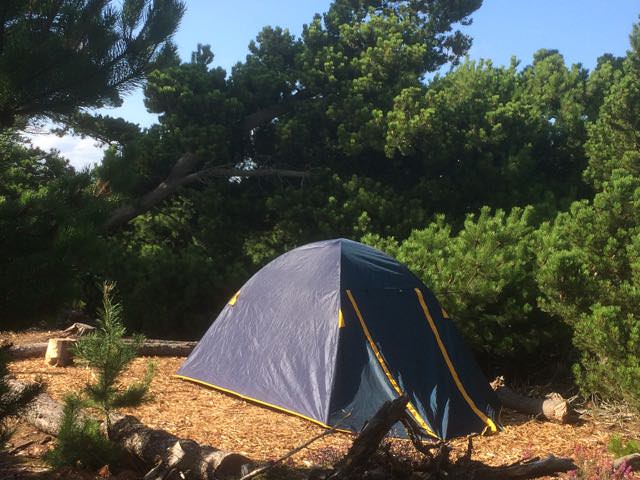 Something kept me coming back to the little advert for the Out of the Ashes retreat. Something chimed deeply – the emphasis on nature, the lack of spiritual jargon. But when I set off from Shetland mid-August, I really had no idea what to expect. I’d always had an inkling to go to Findhorn – it’d been a great desire of my mother’s, to see and most likely to live there, but she never made it. It felt a little like I was doing this with her in mind.
Something kept me coming back to the little advert for the Out of the Ashes retreat. Something chimed deeply – the emphasis on nature, the lack of spiritual jargon. But when I set off from Shetland mid-August, I really had no idea what to expect. I’d always had an inkling to go to Findhorn – it’d been a great desire of my mother’s, to see and most likely to live there, but she never made it. It felt a little like I was doing this with her in mind.
And she would have loved it. Every second, just as I did. One evening towards the end of the week, sitting round the fire and about to start a discussion, we had a quick ‘check-in’ to see how everyone was doing. I pondered how to answer – mind racing with the ideas, feelings of the day – and suddenly thought: would I want to do this day all over again? The answer came, an unequivocal yes. But then – harder, sadder – how many days in my life could I say that about? Hard questions like this were what this week threw up for me, over and over again – not just during the meditation and solo time we spent in the beautiful landscapes of the Hinterland, but in our fire talks and sharings too. It was a time to give voice to pain and fear, as well as hope – and it could have been overwhelming, but the space was so expertly held by Kajedo Wanderer, who somehow managed all the various aspects of the retreat himself, along with two assistants, and made it feel so smooth-running, so easy to flow along with.
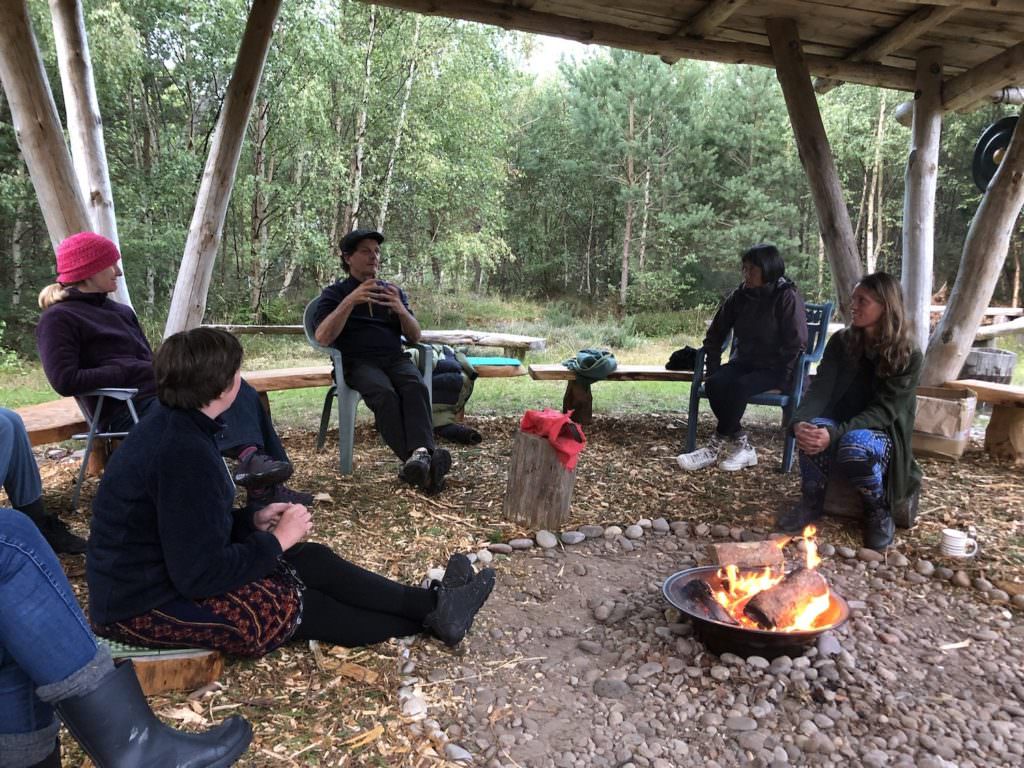
My dislike of camping – a combination of claustrophobia and insect fear – quickly evaporated, no doubt helped by just how lovely the pitches are in the Hinterland. Coming from a treeless part of the world, I marvelled at how sheltered my tent was, almost nestled down in the big arms of an old tree which had sunk down at an angle – but at the same time, the dunes were visible through its branches, the sky clear above. It felt like the perfect place. At night I could hear the sea, the gentle roar as it met that vast stretch of sand. A hugely comforting sound for an islander.
I learnt so much during this week. Kajedo has an ability to share his knowledge with grace as well as enthusiasm – a skill not everyone shares! – and even let us loose on the forest he manages, showing us how to pull up brambles and protect new oaks. Trees had been a bit of a mystery to me – even something to be feared, those dark dead sitka plantations found all over the Highlands, the lack of a horizon, the feeling of being closed-in. I need the big sky. So this week was a revelation. It was a joy to be able to help with the work, in our small way, during that Love in Action afternoon. Coming from a crofting community, I like to work, like to put my body to use after so much time in the mind, and hugely enjoyed the digging, and shovelling a great pile of wood chips to spread around the shelter.
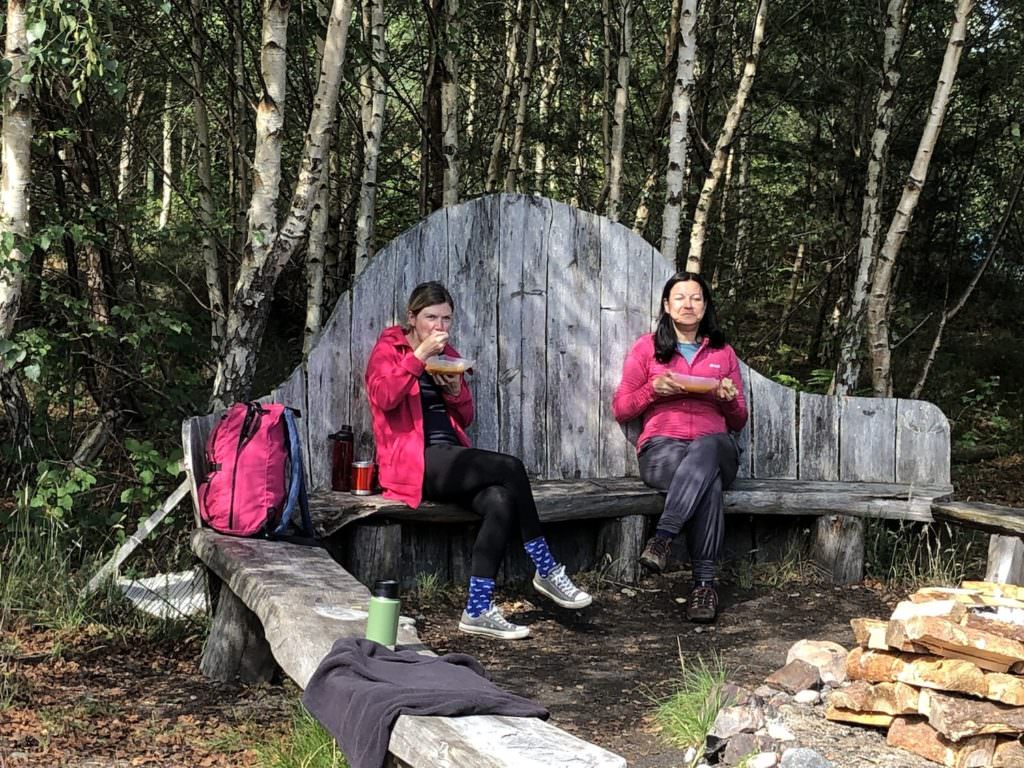
Being so curious about Findhorn, it was interesting to learn about the place from its edge, as it were. We got a good grounding in the ethos and history on our first day, which prompted many questions. I was struck, of course, by the fire sites. We had our own fire, on my native island of Fair Isle, in 2019: a huge research centre and guest house which burnt in a terrifying, ferocious fire no one could control. Some similarities between Fair Isle and Findhorn were striking; especially the questions about what, and how, to rebuild – and for whom. Crisis and opportunity – the title of the retreat felt very apt.
Big questions, and I appreciated the chance to discuss it all, not only with (the ever- patient!) Kajedo but also with the speakers he arranged – Sy and Ash, Jonathan Caddy, and John Talbot, all bringing different perspectives and experiences. That John came to spend hours with us having just arrived back in the country after 18 years away was very deeply appreciated.
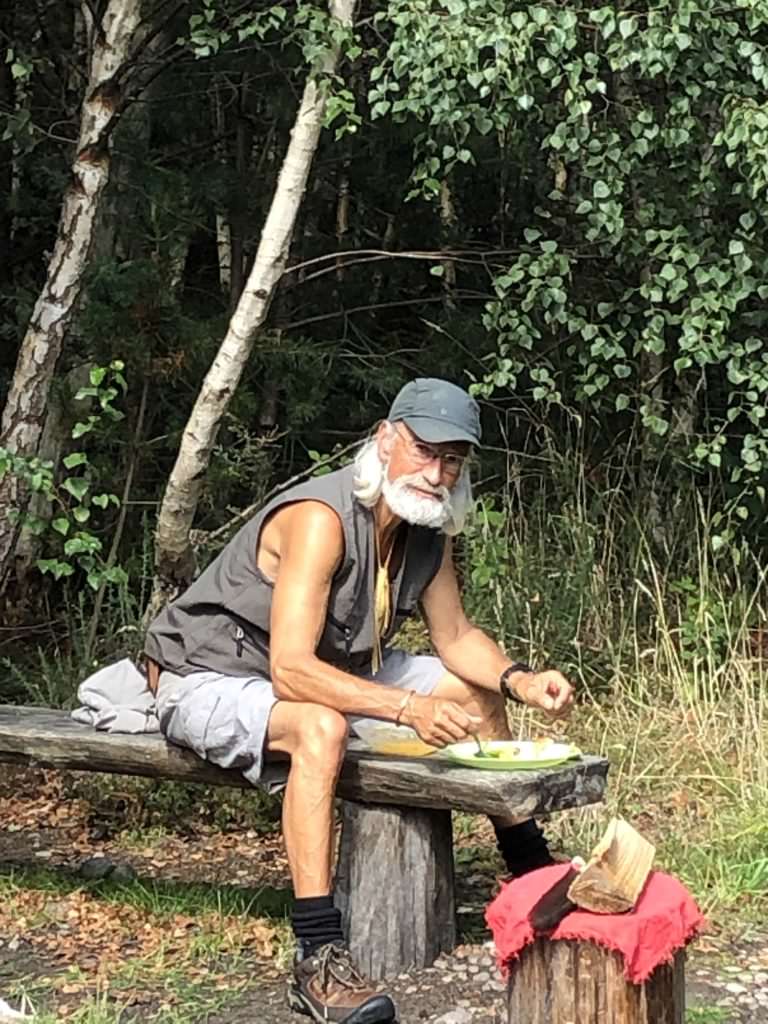
I hadn’t expected to have long discussions about land reform, crofting and the future of the Highlands and Islands, but this is what happened. From my perspective, we are at crisis point here too: crofting is dying a slow death without land reform and new crofts, communities struggling to survive under a relentless ‘airbnb’ colonisation, a numbing logic of ever-increasing tourism. Thinking about ‘hope’ during our last fire sharing, I found my deepest, hardest hope was that we could all flourish, our places flourish, our communities. For that to happen, we’ll have to fight for them and for ourselves. I felt more hopeful about this coming out of the retreat than I ever have before, and will carry it with me.
But it wasn’t just the politics of land, power, and community that had me thinking of home and place. Among all the discussions and learning from ancient cultures in far- flung places, I was thinking of that wisdom much closer to us, geographically. Where I come from, people have been living on, with, that land for a very long time, and doing so sustainably (until the oil came). The older, rooted, ‘eco village’, perhaps. And with all that history comes a huge amount of wisdom – about the land and each other, how to live. Much of Shetland’s culture was eradicated with the arrival of Scots lairds, ministers and teachers in the 1600s – our language, our religion, our values. This is a story of course that echoes elsewhere, and now we’re at a crossroads. Can we gather up the threads again, remember how to connect to nature? Better, how to stop seeing ourselves as separate from nature? Can we ‘become indigenous’ once more?
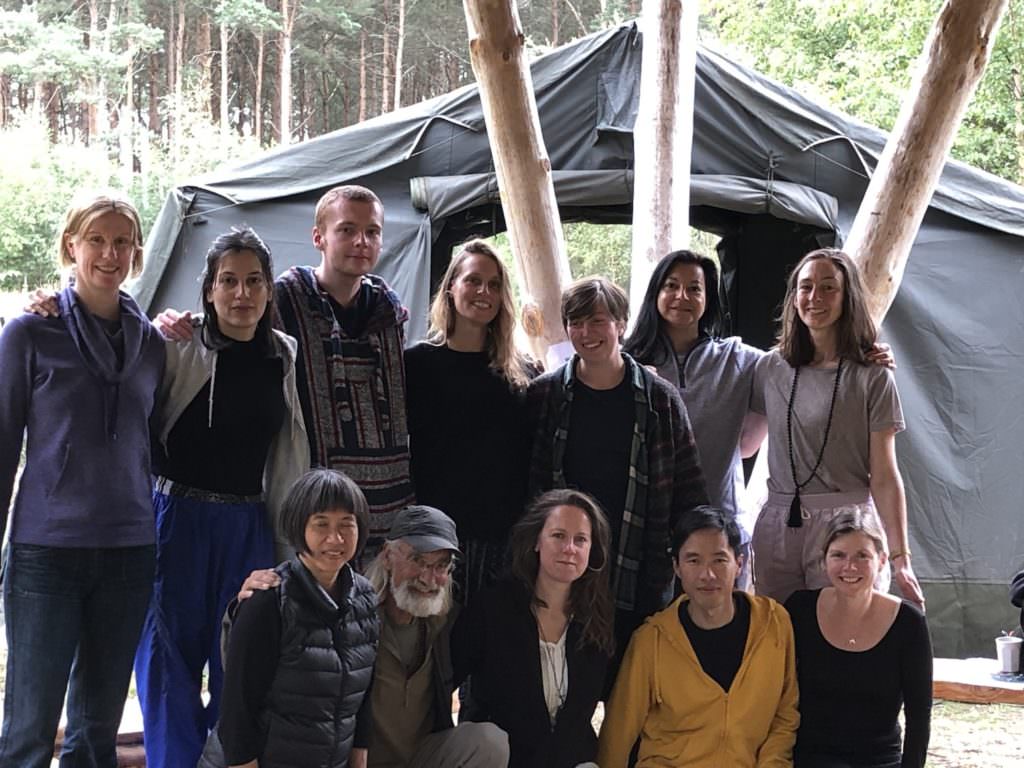
These ideas were rolling around my head but the week with Kajedo and our group – and our excellent speakers – crystallised them, for which I’m hugely grateful. Grateful, too, for the peace I was able to find in myself that week, which I hadn’t thought was there. For the chance to be in that extraordinary landscape, in among its trees and gorse and heather and dunes, to just be there for a week with no pressures, no stress. And of course, grateful for the beautiful last night, Benromach drams and old songs round the fire, which I’ll never forget. To think I nearly didn’t come – nearly missed out on what was one of the best weeks of my life! Always take the plunge…
Jen Stout

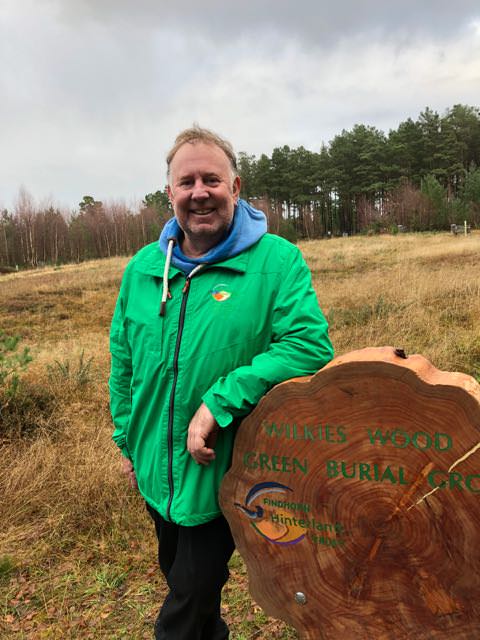


 Something kept me coming back to the little advert for the Out of the Ashes retreat. Something chimed deeply – the emphasis on nature, the lack of spiritual jargon. But when I set off from Shetland mid-August, I really had no idea what to expect. I’d always had an inkling to go to Findhorn – it’d been a great desire of my mother’s, to see and most likely to live there, but she never made it. It felt a little like I was doing this with her in mind.
Something kept me coming back to the little advert for the Out of the Ashes retreat. Something chimed deeply – the emphasis on nature, the lack of spiritual jargon. But when I set off from Shetland mid-August, I really had no idea what to expect. I’d always had an inkling to go to Findhorn – it’d been a great desire of my mother’s, to see and most likely to live there, but she never made it. It felt a little like I was doing this with her in mind.




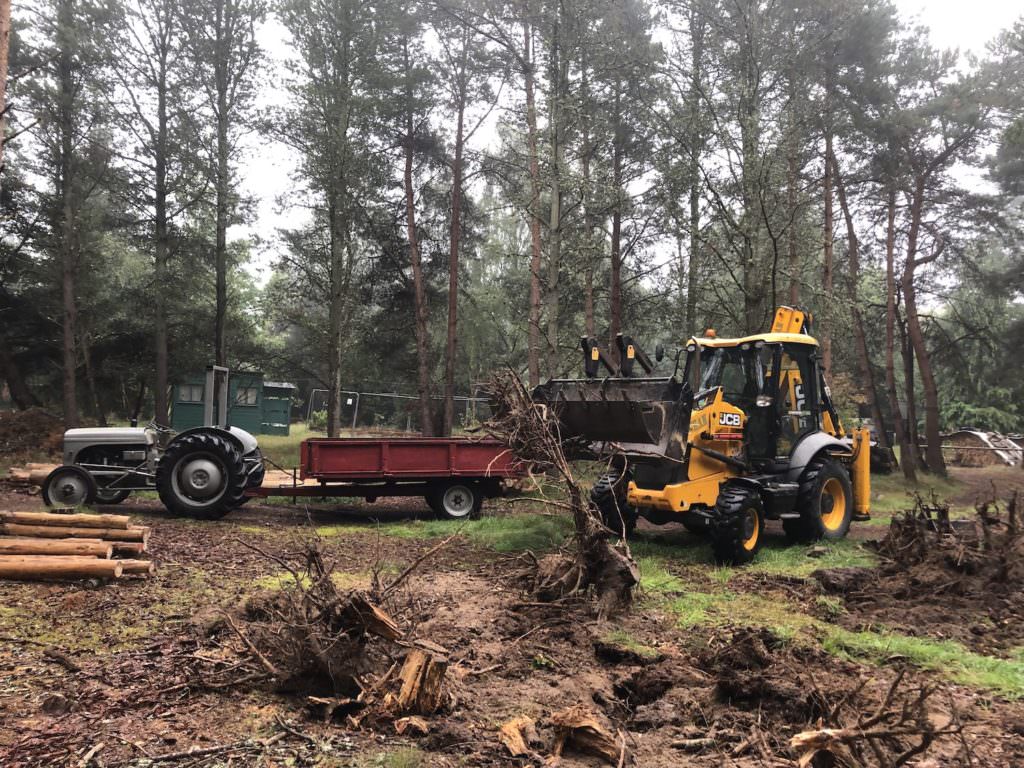
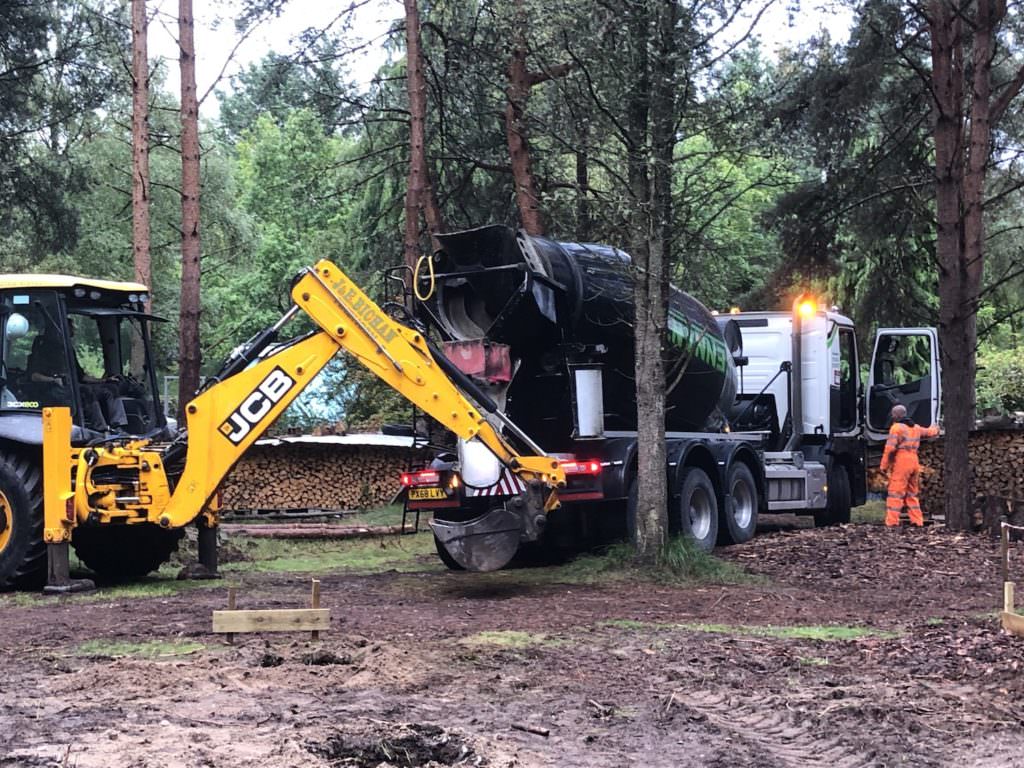
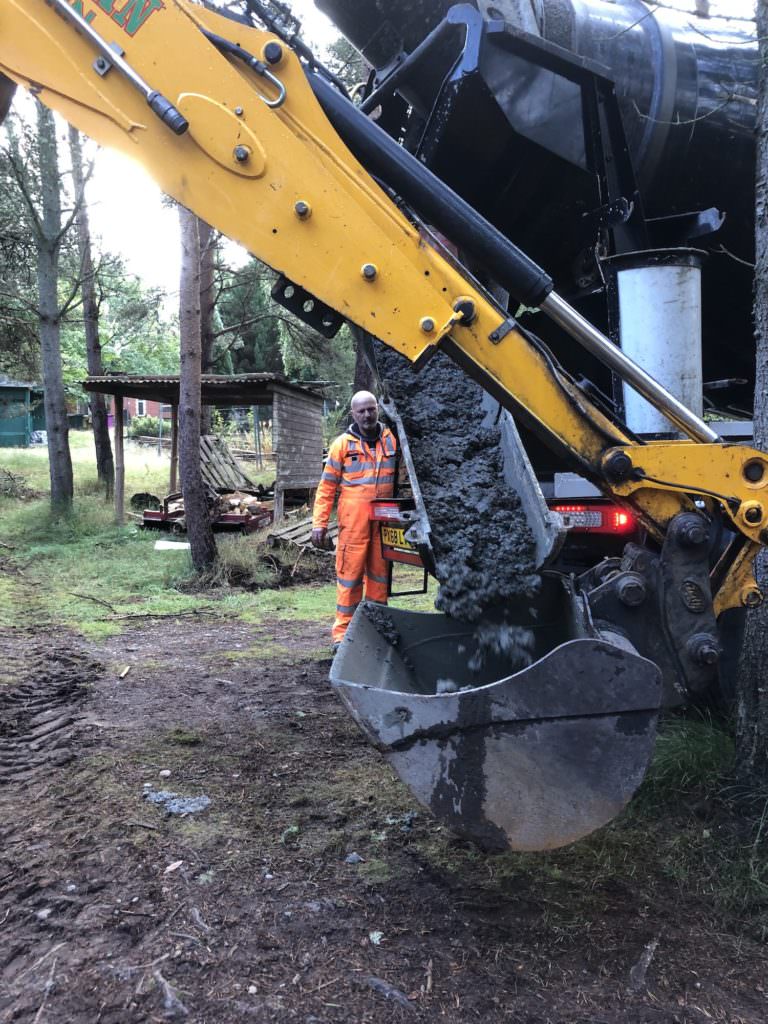
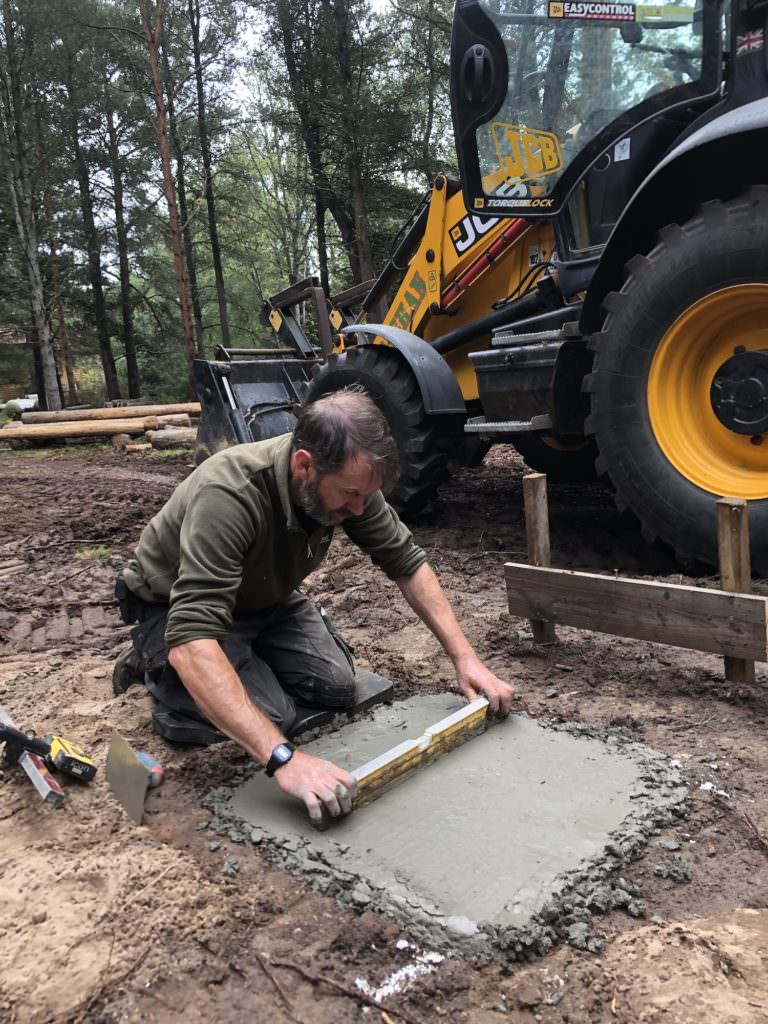
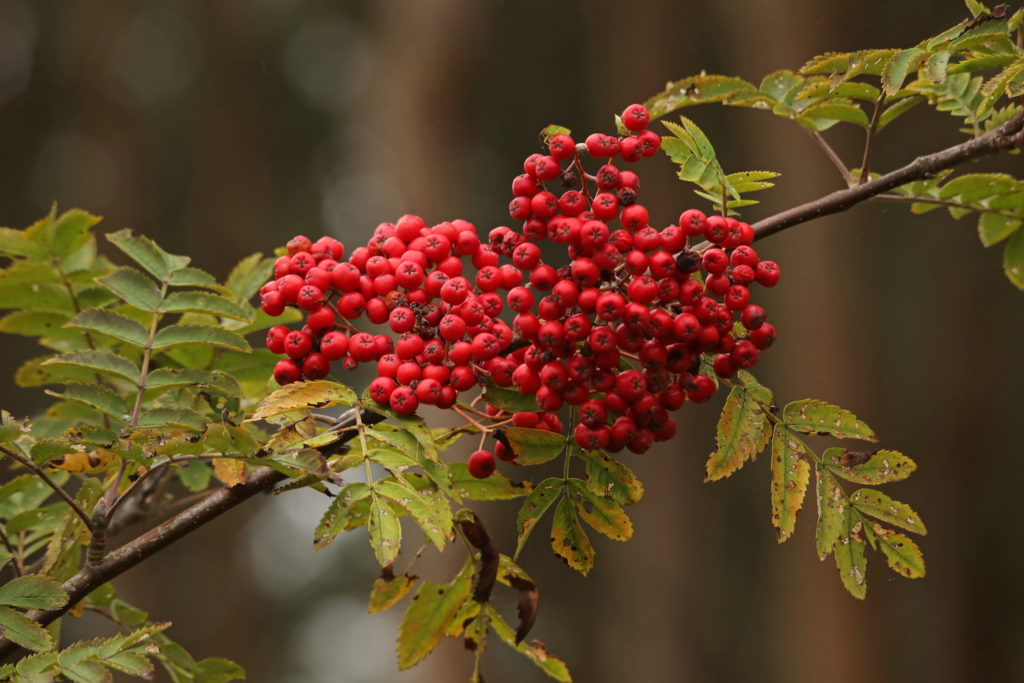
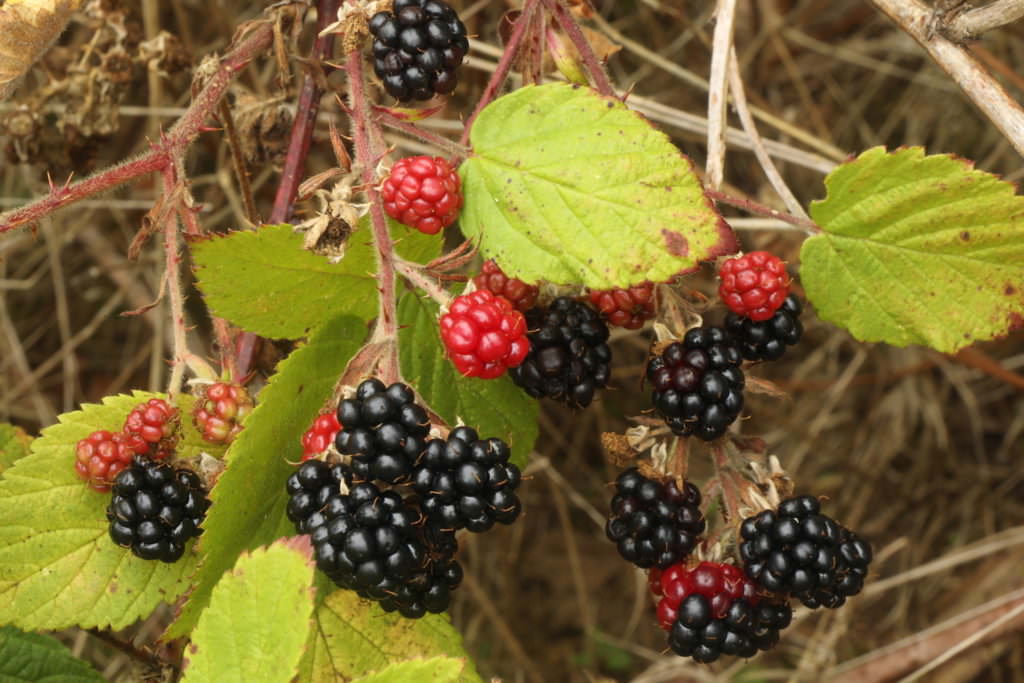
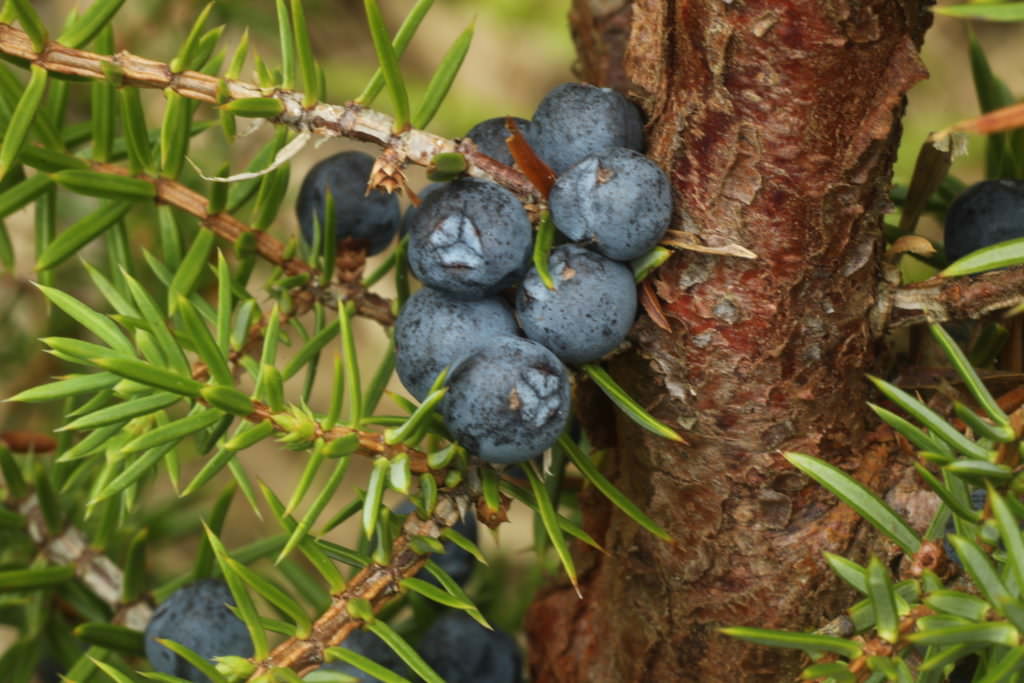
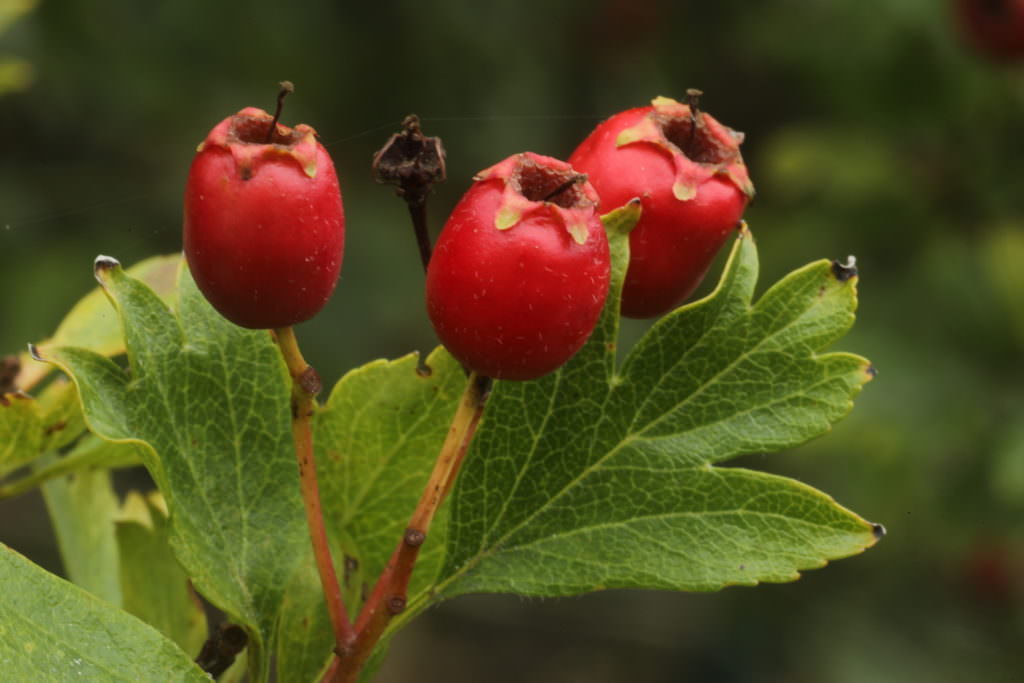
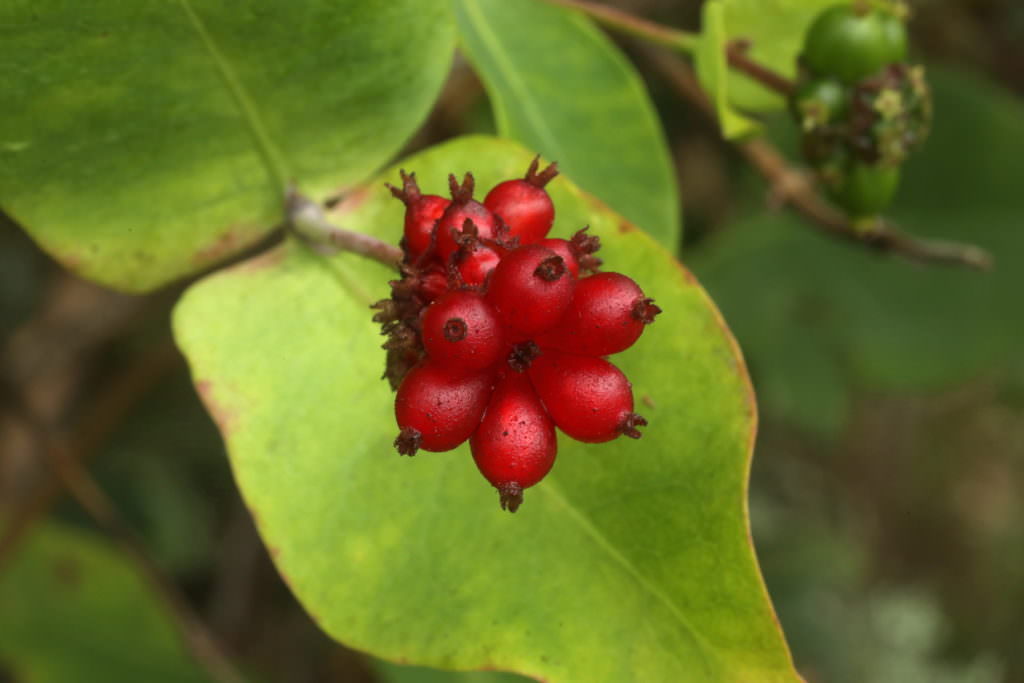
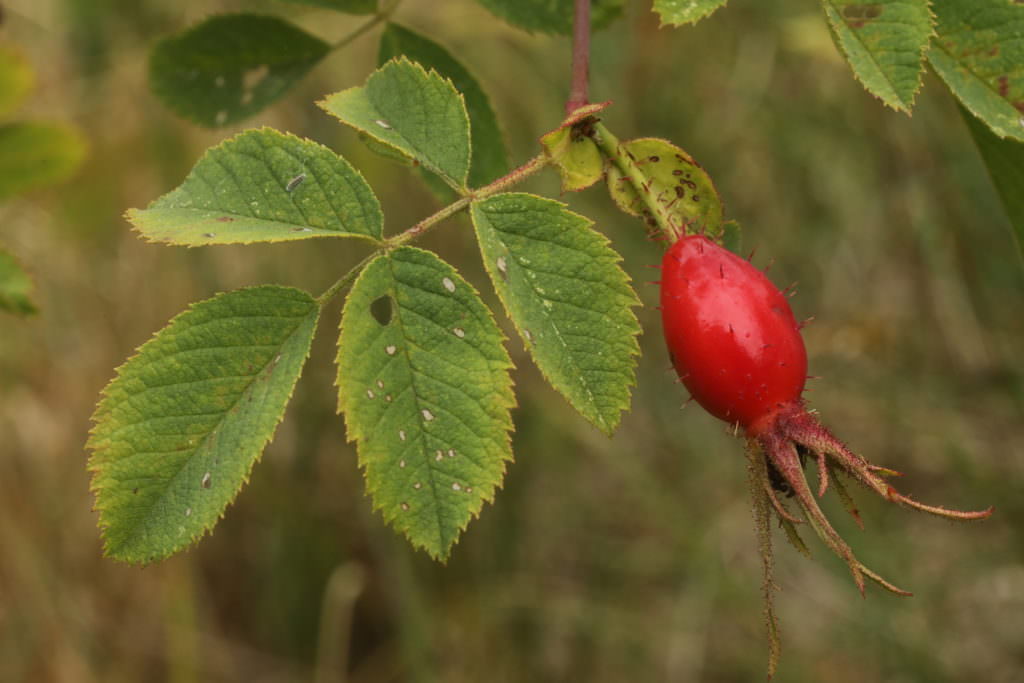
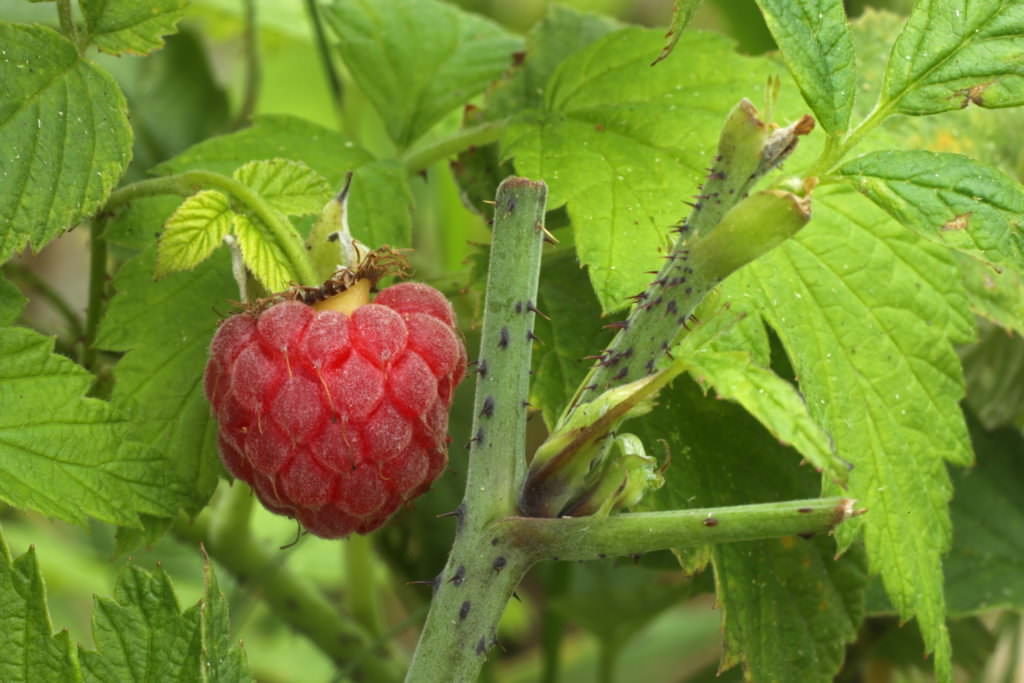
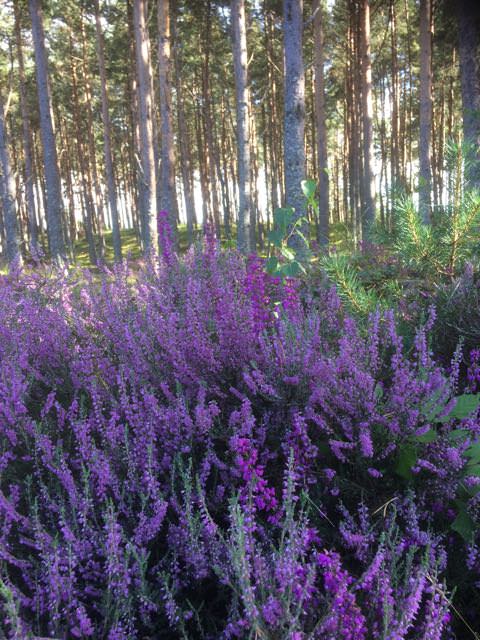

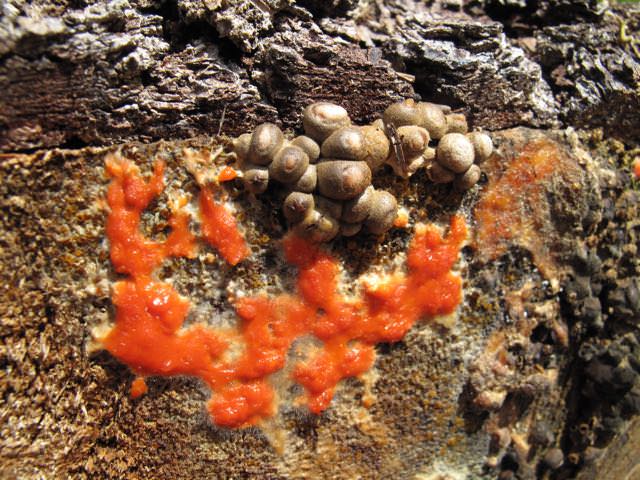
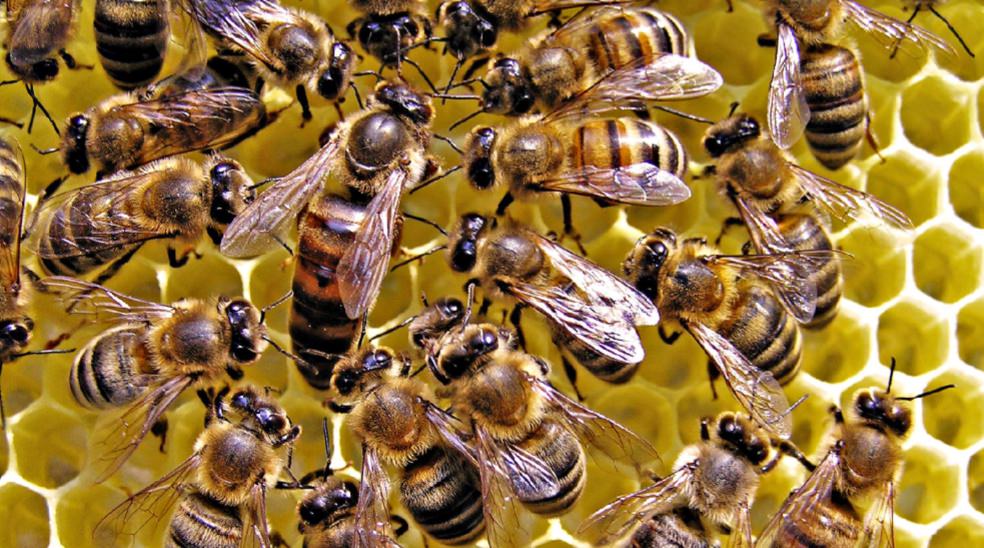
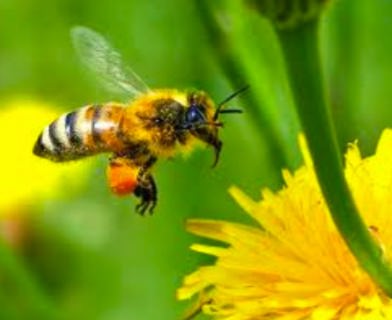
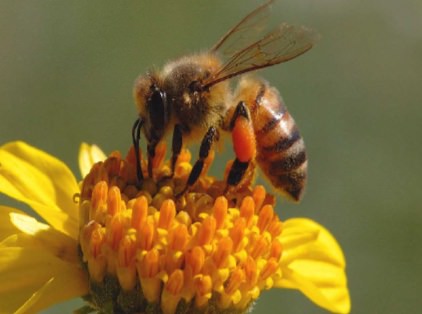
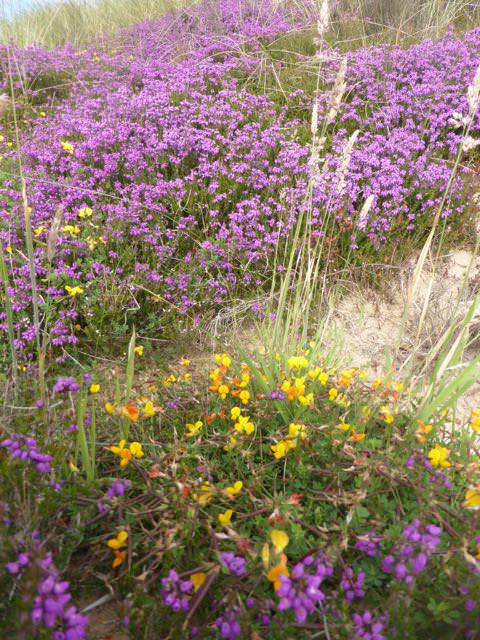
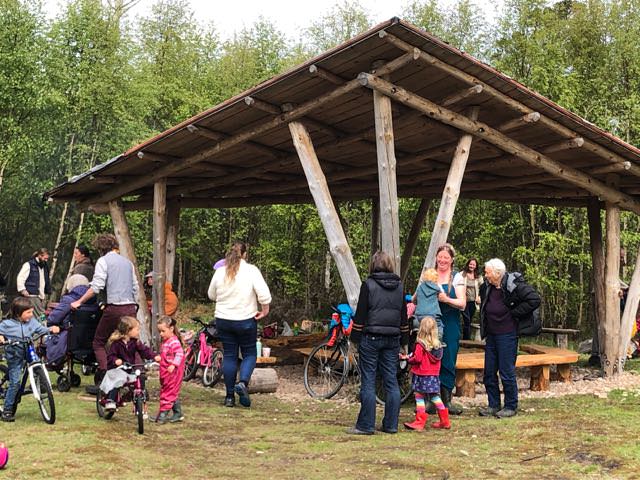

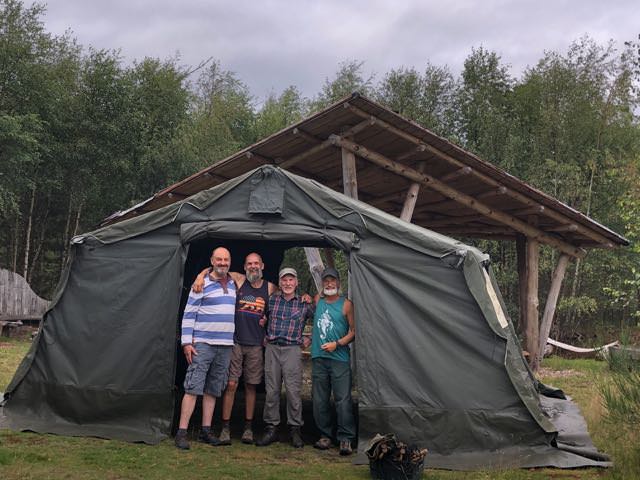
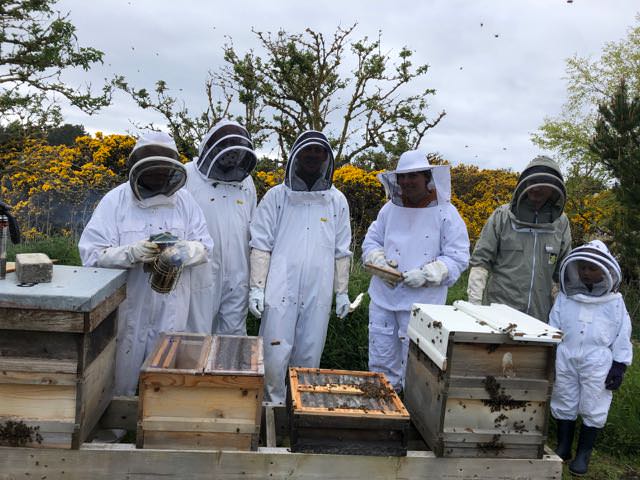
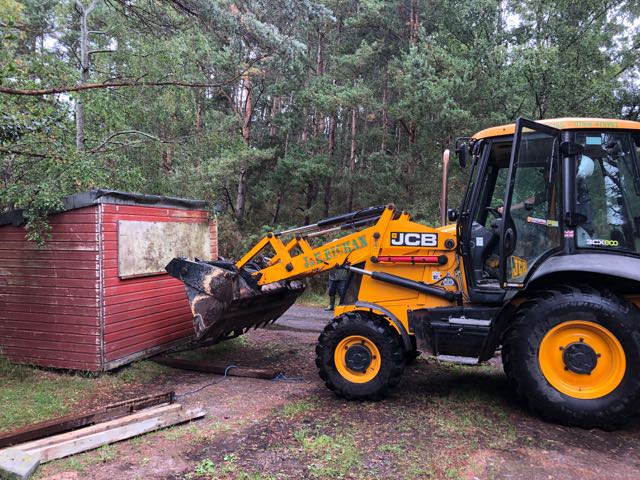
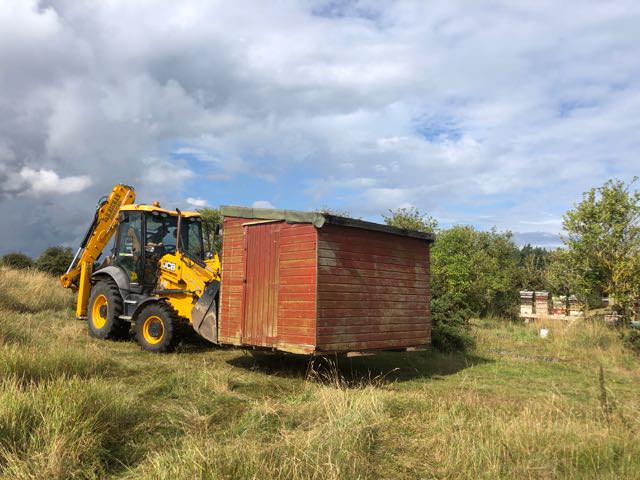















News from the land – Autumn 2021
The trees are late in putting on their autumn colours, however these last few days the birches started to look glorious in their yellow golden foliage. I love the autumn! The colours in the trees, the woodsmoke in the air, the rich damp smells of the earth, the daily noisy pilgrimage of the 17,000 or so geese flying overhead…
As we’ve had a bit of a damp October there is an amazing variety of mushrooms in great numbers everywhere in the woods. We even found the first ‘cauliflower fungus’ here – a very large (the size of a football) attractive mushroom which only fruits every six years or so. In contrast the sweet ‘birds nest fungus’ is tiny – but apparently the oldest mushroom in the UK.
But more on that from our fungi survey…
Another exciting first here in the woods was the sighting of a pine-marten – we even got some nice photos of it.
In October we ran the last of our ‘wild camping retreats’ for this year. And now it’s time to harvest the insights gained and begin the preparations for the seeds for next year. We look back over the seasons and reflect on how it all went and how it can evolve in the future. I am happy to say that the retreats were a great success – both for our retreat participants (we’ve got great feedback from them) and for us as a charity.
We’ve also held burials, the planting of memorial trees, a theatre performance, the weekly gathering of parents with their ‘Findhorn fledglings’, and various other groups and events out at and around our Hinterland shelter. Considering that we are still living with the covid pandemic, it’s been pretty lively out there.
In terms of conservation work on the land;
And now, as we are getting closer to the winter solstice, it is the time when the natural world invites us again to turn more of our attention inward to pause, become still and listen…
Many blessings
Kajedo Wanderer
Land Manager of the Findhorn Hinterland Trust